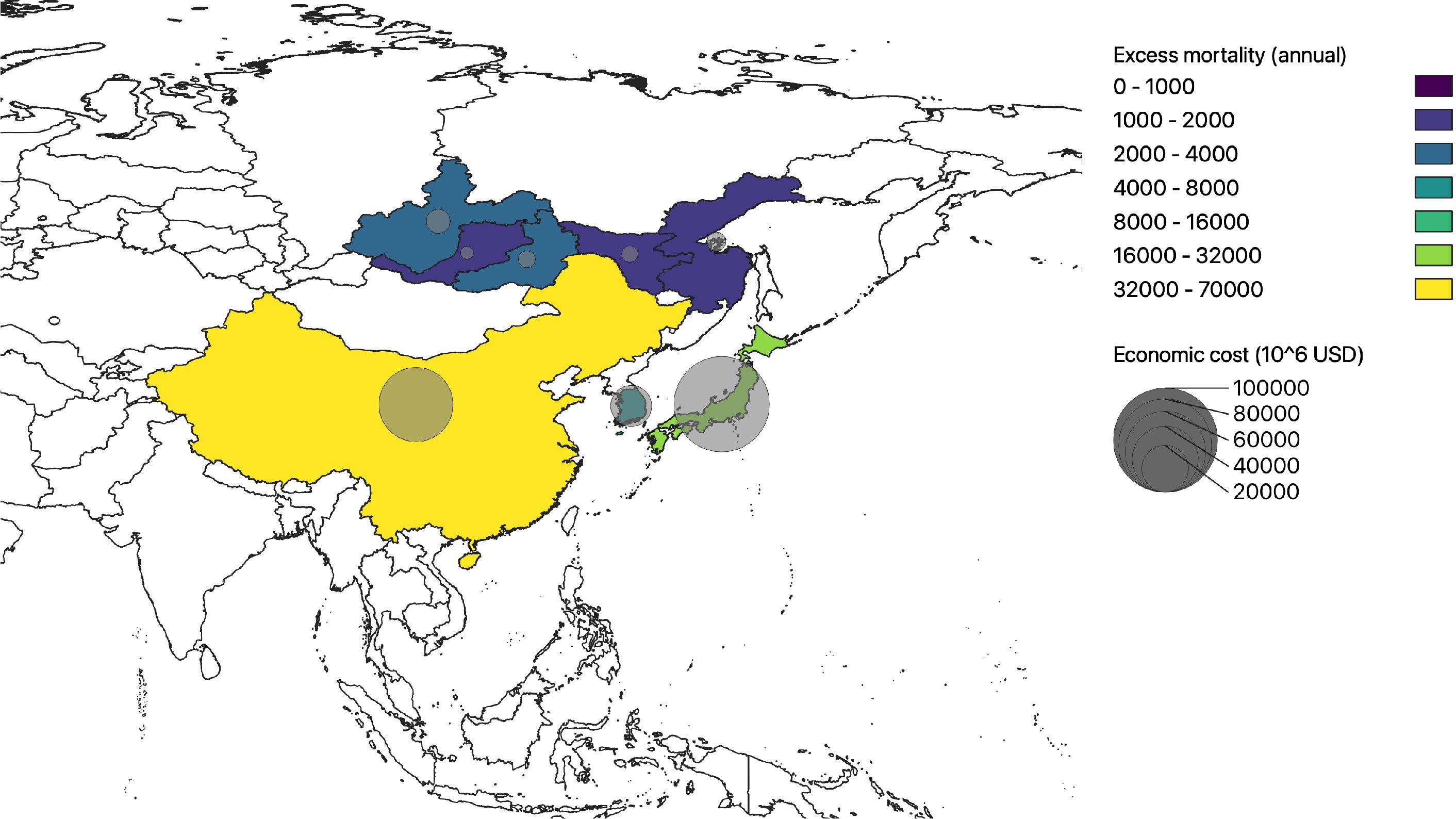As wildfires in Siberia become more common, global climate modeling estimates significant impacts on climate, air quality, health, and economies in East Asia and across the northern hemisphere.
The global effects of increasing wildfires in Siberia have been modeled by researchers at Hokkaido University and colleagues at the University of Tokyo and Kyushu University. The results, published in the journal Earth’s Future, suggest significant and widespread effects on air quality, climate, health, and economics under the most extreme wildfire scenarios.
The authors performed global numerical simulation experiments to evaluate how the increased intensity of wildfires in Siberia would affect air quality, premature mortality, and economy through increased atmospheric aerosols (air pollution particles) under the present climate and near-future global warming scenarios.
“Our modeling reveals a cooling effect broadly across the northern hemisphere and worsened air quality in extensive downwind regions,” says Associate Professor Teppei Yasunari of the Hokkaido team.
A major impact of wildfires on the atmosphere is their emission of atmospheric aerosols—mixtures of tiny particles suspended in the air. These aerosols affect air quality and can have wide-ranging effects on climate.
This research focused on the Siberian wildfires using a Japanese global climate modeling system called the Model for Interdisciplinary Research on Climate version 5 (MIROC5), combined with other models, such as the aerosol model SPRINTARS. The analysis combined atmospheric effects with exploring coupled influences between the atmosphere and the oceans.
The simulated atmospheric cooling effect across broad areas throughout the northern hemisphere is likely linked to the reflection of sunlight from the aerosol particles. The research suggests this may induce a partial suppression of warming under the near-future global warming conditions near the Siberian wildfire areas.
Under the most extreme wildfire scenario, another significant impact will be worsened air quality due to particulate and gas (aerosol precursor) pollution emissions, not only in the local regions but also across large areas of East Asia that are generally downwind of the wildfires.
“Our results suggest that increased efforts are needed to limit the effects of the Siberian wildfires somehow to prevent excess deaths, respiratory and other illnesses, and economic losses because it is hard to prevent the occurrence of Siberian wildfires in such large areas,” Yasunari says.
The modeling suggests that the estimated direct impact of increased deaths due to air pollution could incur health-related costs in the order of 10 billion US dollars annually. However, this study did not consider substantial further costs and secondary social effects that could result from non-fatal illnesses, leading to workplace absences and reduced educational opportunities. Therefore, a greater level of costs may be possible in reality.
The surprisingly broad significance of wildfires in Siberia assessed by the global sensitivity simulations with the global climate model suggests that the model’s performance should be further refined to allow quantitatively improved estimated impacts that will assist efforts to understand and mitigate the effects.
“Our findings send a critical message about the broad effect of increased particulate matter due to massive wildfires in the atmosphere on climate and air quality, which will become ever more significant as the worldwide changes due to global warming proceed,” Yasunari concludes.
More information:
Comprehensive Impact of Changing Siberian Wildfire Severities on Air Quality, Climate, and Economy: MIROC5 Global Climate Model’s Sensitivity Assessments, Earth’s Future (2024). DOI: 10.1029/2023EF004129
Citation:
Modeling broader effects of wildfires in Siberia (2024, April 24)
retrieved 24 April 2024
from https://phys.org/news/2024-04-broader-effects-wildfires-siberia.html
This document is subject to copyright. Apart from any fair dealing for the purpose of private study or research, no
part may be reproduced without the written permission. The content is provided for information purposes only.

